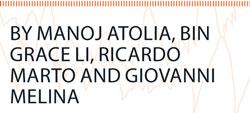Reply To:
Name - Reply Comment
Last Updated : 2024-04-20 11:24:00
 Roads or schools? It’s a question akin to the ‘guns or butter’ choice that governments around the world confronted in the 20th century: How to spend a nation’s finite resources to produce the maximum benefit for its people.
Roads or schools? It’s a question akin to the ‘guns or butter’ choice that governments around the world confronted in the 20th century: How to spend a nation’s finite resources to produce the maximum benefit for its people.
In our recent International Monetary Fund (IMF) Working Paper, we find that low-income countries tend to spend less on schools than on roads as a share of gross domestic product (GDP)—even though investment in education may be a more pressing need in their societies.
We divide capital spending on infrastructure into two categories: economic infrastructure describes investments such as roads, railways, ports, water, power and telecommunications that help the economy function better. Social infrastructure comprises capital spending, including schools, hospitals and universities that primarily delivers social services. We looked at data for a cross-section of low-income countries during 2000-2008 and labelled these categories roads and schools.
Short-changing schools
Why do countries make these choices? Investment in roads can deliver a short-term increase in output, new economic opportunities and lower poverty—even though, in the long run, capital spending on schools results in a much larger increase in output. The trade-off is rather stark and clear. For an average low-income country, in the long run, a permanent increase of public investment in schools of one percent of GDP raises output by about 24 percent, whereas an equal investment in roads boosts production by just 5 percent.
For political leaders, the critical factor may be which choice produces the quickest results and that tips the scales in favour of roads. An investment in roads, instead of schools, produces faster economic growth for the first 13 years. By contrast, an investment in schools slows growth for nine years mainly because of the labour supply change.
Political myopia
Eventually, the payoff in growth from an investment in schools overtakes the gain from similar spending for roads. But that takes 24 years and few leaders have such a long planning horizon. We call this condition ‘political myopia’.
In the meantime, the peak of the public debt increase associated with investment in schools is three times larger than that associated with investment in roads. The reason lies in upfront fiscal costs and the greater delay with which schools increase output and government revenues, which poses greater risks to debt sustainability.
This only adds to leaders’ reluctance to commit resources to schools.
Front-loading the investment, a strategy we call the ‘big push’, accelerates the payoff. With such a ‘crash’ effort, the gain in growth from schools overtakes that derived from roads in about 20 years or about four years earlier.
Short-term costs
Of course, the short-term costs of the ‘big push’ are higher. A rapid scale-up of schools spending detracts from private consumption, labour supply and output in the short and medium term.
And the ‘big push’ requires a higher tax and debt burden in the short run. But within 20 years, public debt as a share of GDP reverts to its original level or lower, owing to the faster rise in output.
The handicap of schools vis-à-vis roads from a fiscal perspective almost vanishes with a ‘big push’.
Even so, that may not be enough to overcome political myopia. Addressing the short-term concerns may require the help of multilateral agencies. Specifically, our paper recommends offering concessional financing and grants to give policymakers the incentive to emphasize investment in schools.
While tying aid to social infrastructure would address the issue of myopia, concessional terms would mitigate concerns of debt intolerance.
(Manoj Atolia is Bernard F. Sliger Professor of Economics in the Department of Economics at Florida State University (FSU). Giovanni Melina is an Economist in the Research Department of the International Monetary Fund. Ricardo Marto is a Ph.D. student in Economics at the University of Pennsylvania. Bin Grace Li is a Senior Economist in the Research Department at the International Monetary Fund)

Add comment
Comments will be edited (grammar, spelling and slang) and authorized at the discretion of Daily Mirror online. The website also has the right not to publish selected comments.
Reply To:
Name - Reply Comment
On March 26, a couple arriving from Thailand was arrested with 88 live animal
According to villagers from Naula-Moragolla out of 105 families 80 can afford
Is the situation in Sri Lanka so grim that locals harbour hope that they coul
A recent post on social media revealed that three purple-faced langurs near t